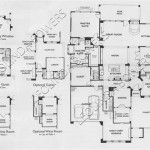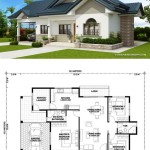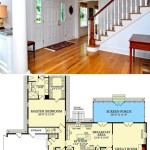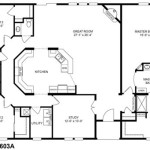Designing A House Floor Plan
A well-designed house floor plan is the foundation of a comfortable and functional home. It should reflect your lifestyle, needs, and aspirations. Creating a floor plan involves careful consideration of various factors, including space allocation, traffic flow, natural light, and aesthetics. Here's a comprehensive guide to help you design a house floor plan that meets your unique requirements:
## 1. Determine Your NeedsStart by defining your family's needs and lifestyle. Consider the number of bedrooms and bathrooms required, as well as the size and type of living spaces you desire. Factor in common areas such as living rooms, dining rooms, kitchens, and family rooms. Consider future needs, such as a growing family or potential additions like a home office or guest suite.
## 2. Define Space RelationshipsOnce you have a list of rooms, determine their proximity and relationship to each other. Consider which rooms need privacy, like bedrooms and bathrooms, and which can be more open and connected, like the kitchen and living room. Plan for traffic flow to avoid bottlenecks and ensure smooth movement throughout the house.
## 3. Optimize Natural LightNatural light is essential for creating a bright and inviting home. Position windows and doors strategically to maximize sunlight in living areas, bedrooms, and kitchens. Consider the orientation of your house to take advantage of natural daylighting while minimizing heat gain or loss.
## 4. Plan for StorageAdequate storage is crucial for keeping your home organized and clutter-free. Plan for built-in closets, shelves, and cabinets in all rooms. Consider a pantry in the kitchen, a linen closet in the bathroom, and a mudroom or entryway closet for coats and shoes.
## 5. Consider Architectural DetailsArchitectural details, such as ceiling heights, moldings, and fireplaces, can enhance the aesthetic appeal of your home. Decide on the overall architectural style you prefer and incorporate elements that complement it. Consider the size and proportion of rooms, as well as the flow and rhythm created by architectural details.
## 6. Seek Professional AssistanceIf you lack experience in architectural design, consider consulting a professional architect or home designer. They can assist you in creating a floor plan that meets your specific needs while adhering to building codes and regulations. An experienced professional can also provide valuable insights and recommendations.
## 7. Review and RefineOnce you have a draft floor plan, take time to review and refine it. Consider the functionality, aesthetics, and flow of the design. Make adjustments as needed to optimize space utilization, improve traffic flow, or enhance the overall appeal of your home. It's essential to ensure that the floor plan aligns with your vision and meets the needs of your family.
## ConclusionDesigning a house floor plan is an iterative process that requires careful planning and attention to detail. By following these steps, you can create a floor plan that reflects your lifestyle, maximizes functionality, and enhances the overall value of your home. Remember to prioritize your needs, optimize natural light, plan for storage, consider architectural details, and don't hesitate to seek professional assistance if necessary. With thoughtful planning and execution, you can design a house floor plan that provides a comfortable and enjoyable living space for years to come.

House Plans How To Design Your Home Plan

House Plans How To Design Your Home Plan

Floor Plan Creator And Designer Free Easy App

Floor Plans Types Symbols Examples

Floor Plan Creator And Designer Free Easy App

House Plans How To Design Your Home Plan

Creating The Perfect Floor Plan Quarry View Building Group

Floor Plans How To Design The Perfect Layout Cherished Bliss

House Plans How To Design Your Home Plan

Where You Can Buy House Plans Live Home 3d








